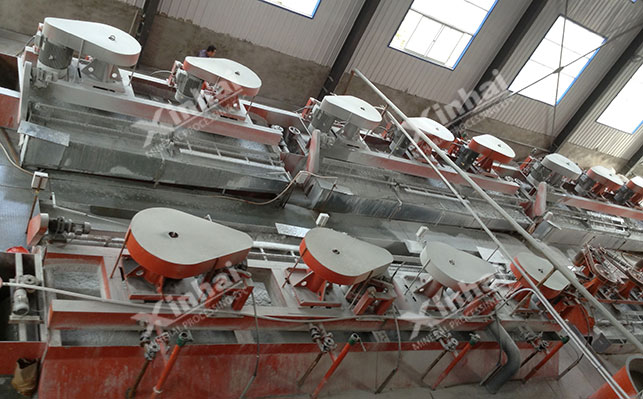Recently, the Philippine Ministry of Environment and the Ministry of Trade and Industry announced that the Philippines will study the imposition of tariffs or prohibitions on the export of nickel ore and promote investment in the nickel processing industry.
Nickel is not only the production of stainless steel, but also one of the raw materials for ternary batteries in terms of new energy. This statement not only brings opportunities but also challenges to mining enterprises, which will speed up the development of nickel resources.
At present, there are more than 50 nickel resources, but the main nickel resources to be developed are nickel sulfide and nickel oxide. Following is a brief edition to sort out the characteristics of these two nickel minerals and their suitable mineral processing processes.

Copper (also called copper-nickel sulfide) is commonly found in nickel sulfide ores in the form of chalcopyrite, while nickel is mostly in the form of free nickel sulfide such as nickel pyrite, nickel needle sulfide and nickel violet sulfide. In addition, some nickel is isomorphic in pyrrhotite.
According to the characteristics of this type of nickel ore, flotation is the main mineral processing method available, while gravity is the auxiliary process.
1. Flotation process of nickel sulfide
The commonly used flotation methods for nickel sulfide ore are preferred flotation, mixed flotation and mixed-preferred flotation.
Preferred flotation: For copper-nickel sulfide ores, when the gold content of copper is higher than that of nickel, the preferred flotation is better. In general, better copper and nickel concentrates can be obtained by flotation of copper and nickel suppression first, and then separation of nickel minerals in flotation tailings.
Mixed flotation: This method is mainly suitable for treating sulfide minerals with low copper content and high nickel content. In general, copper and nickel are mixed and selected, then copper and nickel concentrates are separately obtained from the mixed ore by flotation. Sometimes, the mixed concentrate is made into high nickel matte by smelting method, then grinded and de-pesticided, and copper and nickel concentrates are obtained by adding inhibitors (nickel inhibitor) and collectors (copper collector).
Mixing-preferred flotation: This method is mainly used to separate ores with different flotability of nickel minerals. In general, copper-nickel mixed minerals are obtained by mixed flotation first, then copper and nickel concentrates are separately selected preferentially from the mixed minerals. If there are large differences in floatability between minerals, after obtaining mixed concentrates, the tailings are enriched again, and then the nickel minerals with poor floatability are further recovered. In addition, it should be noted that when dealing with nickel sulfide minerals by the mixed-priority flotation process, copper should be allowed to enter the nickel ore rather than nickel into the copper ore, otherwise the copper concentrate will lose more nickel in the smelting process.
2. Gravification process of nickel sulfide ore
The main purpose of gravity separation in separating nickel resources is to recover as much useful components as possible. The dense and disseminated copper-nickel-like ores are first re-classified and separated according to their weight. Then the copper and nickel concentrates are separated by separate flotation of light and heavy minerals.
Most nickel oxide minerals are laterite nickel, followed by nickel silicate. This type of nickel ore belongs to weathered mineral. Nickel mainly exists in the form of nickel-brown iron, in which the nickel content is low while the iron content is high. In mineral processing, metallurgical enrichment is the main method, including pyrolysis and wet metallurgy.
1. Nickel Sulfide Pyrolytic Smelting Process
There are two methods of pyromechnical smelting, i.e. original smelting and sulfide smelting. Among them, the original smelting process is mainly used to obtain nickel iron ore, while sulfide smelting mainly obtains high nickel matte minerals.
2. Nickel Sulfide Wet Smelting Process
Hydrometallurgy includes pressurized ammonia leaching and pressurized acid leaching. Among them, pressurized acid leaching is suitable for treating nickel oxide ore containing cobalt, which is conducive to the recovery of cobalt. Pressurized ammonia leaching is suitable for treating nickel oxide ores with low or no cobalt content.
The above is an introduction to the ore characteristics of nickel sulphide and nickel oxide ores and their common mineral processing processes. In actual mineral processing plants, the mineral processing scheme should be determined according to the nature of nickel ores and can not be selected blindly. Therefore, it is recommended that beneficiation tests be carried out first and a suitable beneficiation process plan for nickel ore is designed according to the results of the test analysis.